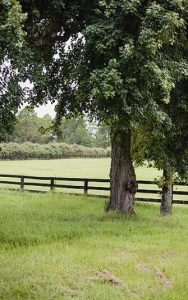
So, you’ve finally installed the fence of your dreams on your property. Congratulations! You may now go on permanent vacation. No worries right? Wrong!
Just like a home, boat, car, or any other major investment of any kind, your most important investments will not maintain themselves, will they? A new fence line is no different! It is your job to make certain you care for your valuable additions to your farm or residence.
What must I do that hasn’t already be done?
Actually, taking care of your fence only requires a small amount of good common sense mixed with some good, old-fashioned elbow grease. Yes, it does require your time and effort, but you’ll sleep better at night knowing your fence is properly maintained and will serve you and your valuable livestock for years to come.
Keeping your fencing nicely trimmed and free of weeds and overgrowth is the first order of the day. Simply mowing the perimeter and either spraying or weed eating around the fence posts and bottom rails will go a long way in keeping your fence up to snuff. A well-maintained fence line says a lot about you and your property!
How are your boards, rails, and wire holding up?
A brisk walk or golf cart ride around the perimeter with a roll of brightly colored flagging tape to mark trouble spots that need immediate attention is all that is needed. The next step is to straighten up that leaning post, nail in those nails that have worked loose, or replace a cracked or broken board. All these things will assure you that your animals and property are safely protected.
At some point in the life of your fence, you may want to consider a good coat of paint to add weather protection and bring back its original beauty. While this maintenance is an additional cost, it will pay off in the long run for you. It’s a good idea to kill any mildew that may be growing on your fence before the painting is done with a half and half mixture of Clorox and water.
If you cannot find the time or energy to do all these things yourself- never fear! Visit www.generaltimber.net to find a list of fencing contractors that are more than happy to do so or simply call us and we will put you in touch with them.
In closing, remember this…a well-kept fence will always keep you well!



